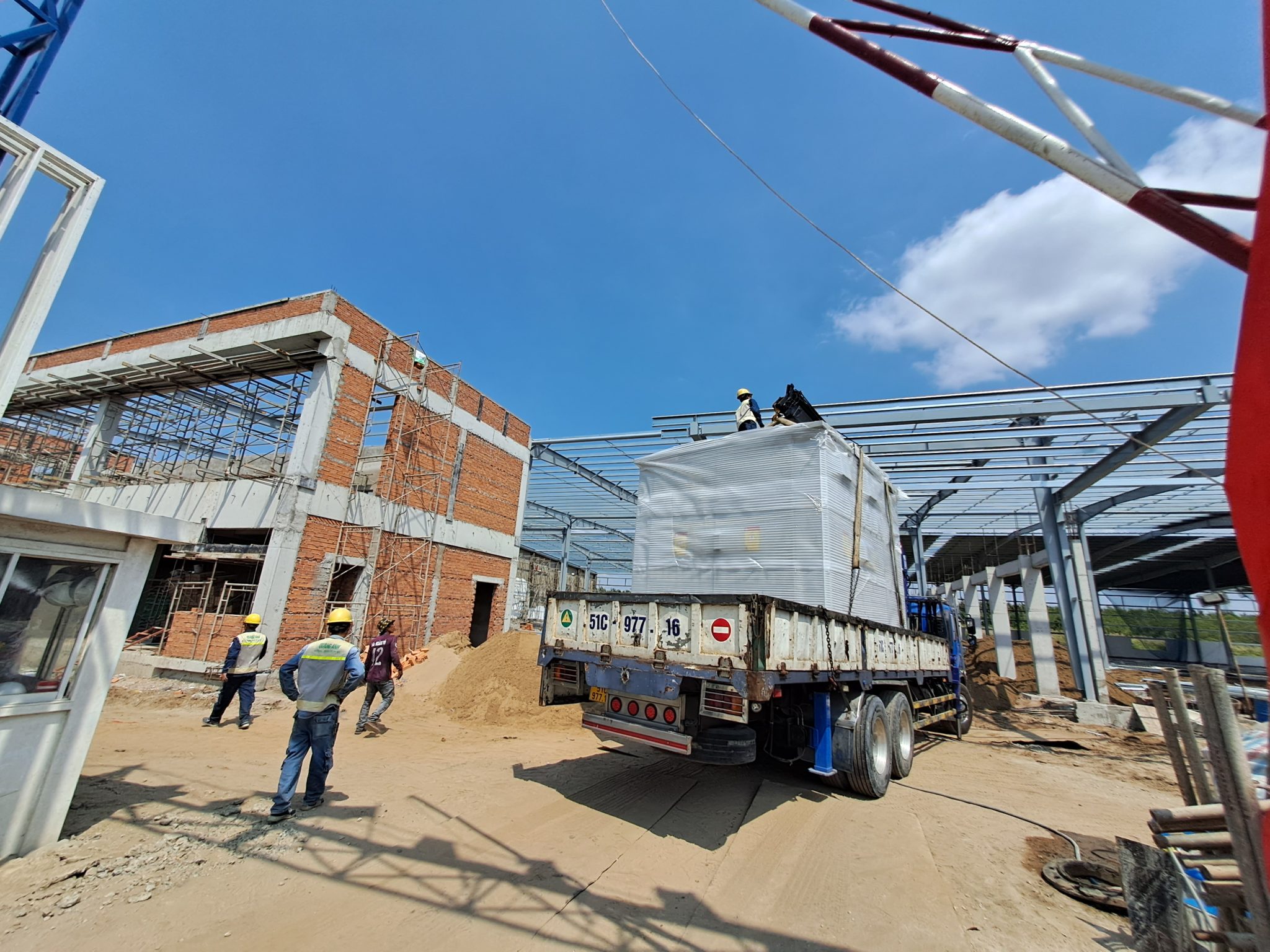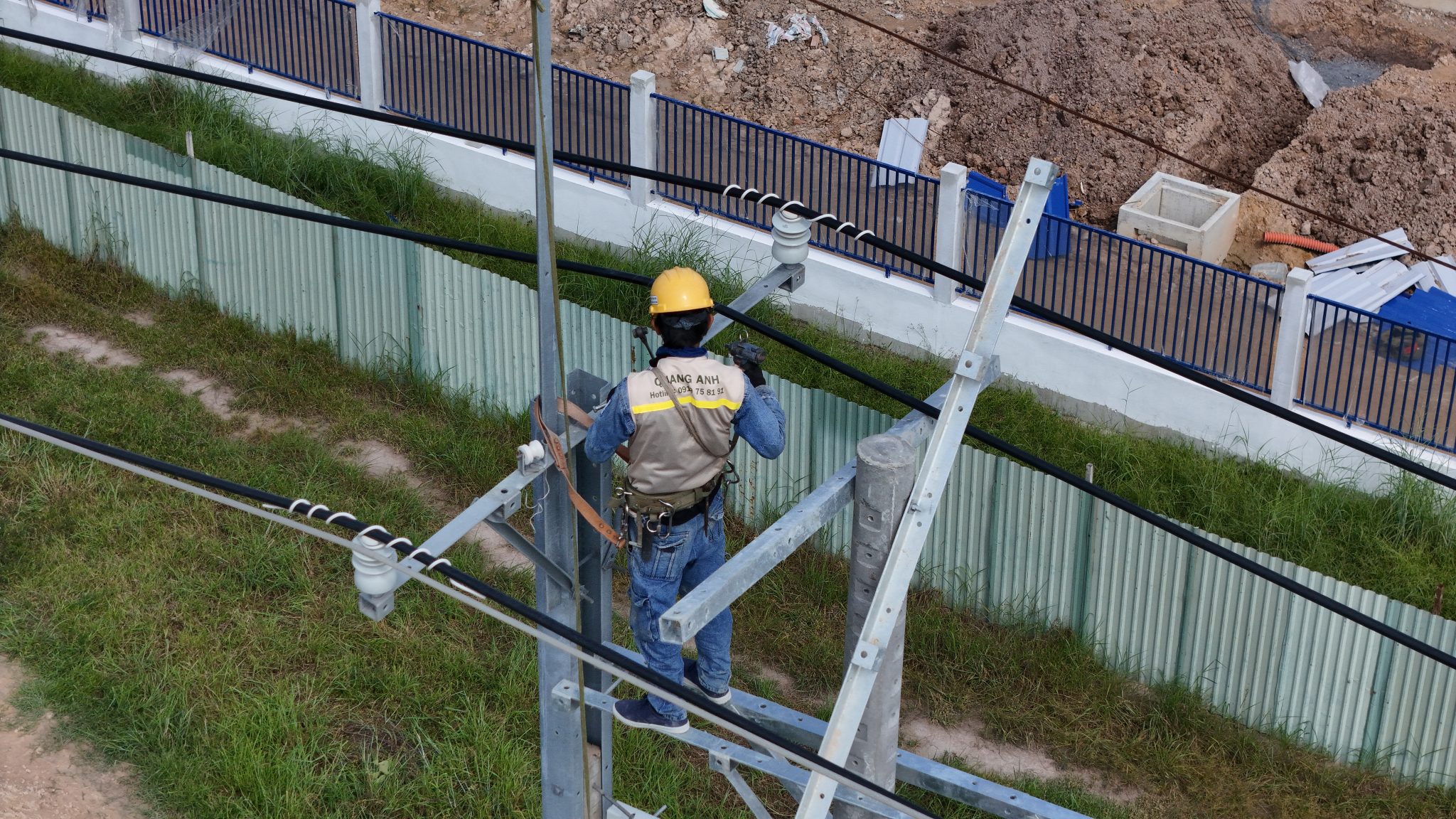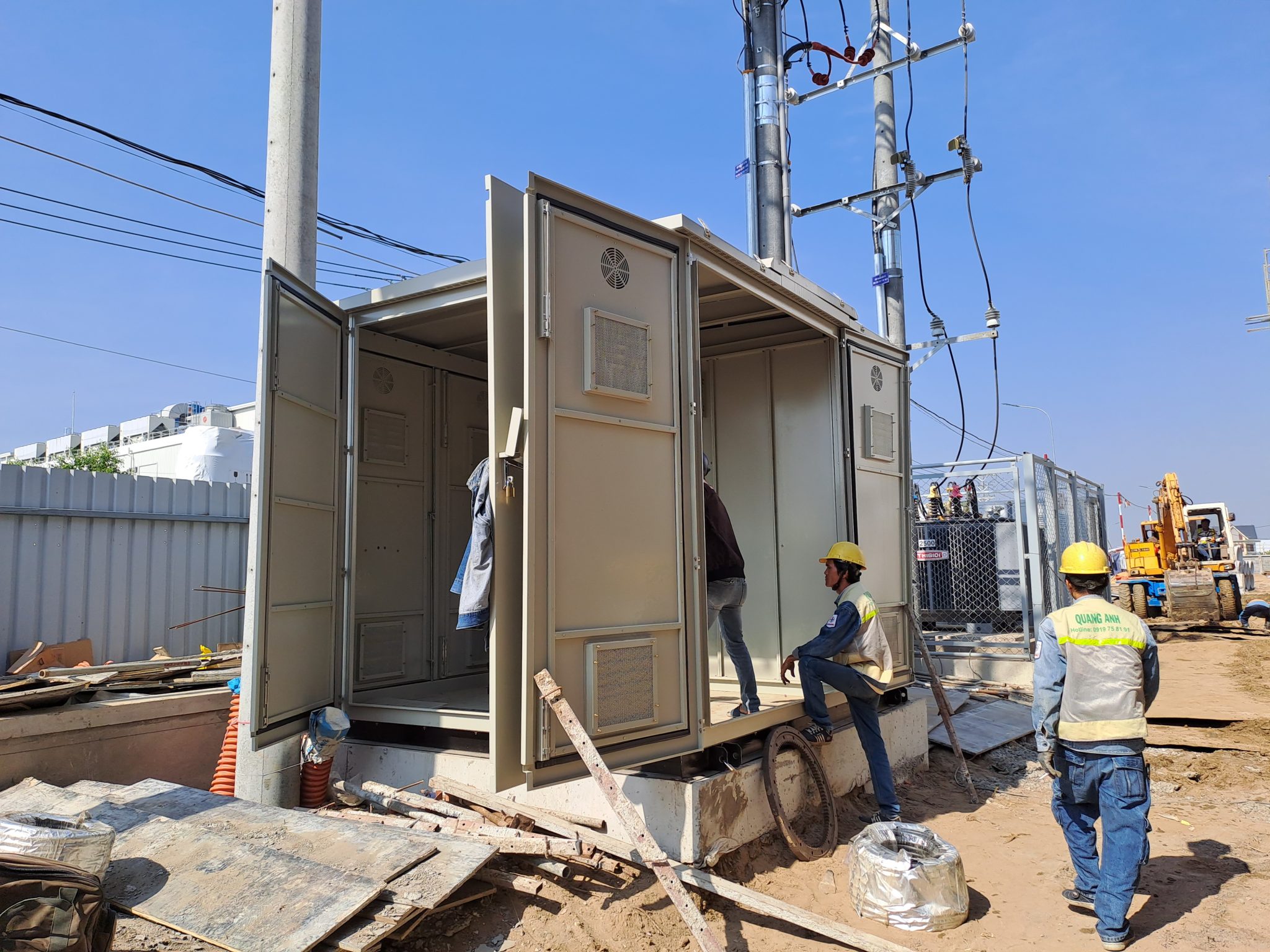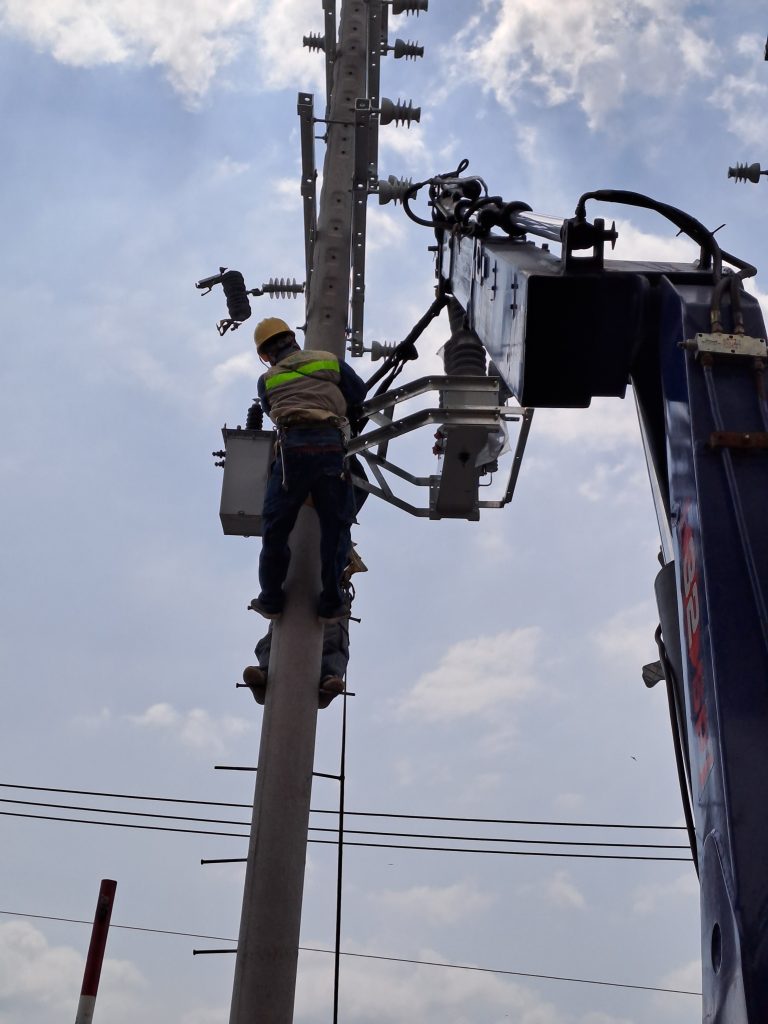News
Design and Installation of Factory Electrical Systems: Process and Technical Standards
Designing electrical systems in factories involves constructing and installing a safe and stable electrical system for production, including surveying, design, and acceptance testing.
Electrical System Design and Installation Process
The process of designing and installing factory electrical systems includes steps such as site surveys, detailed design of high and low voltage systems, installation of cable trays and electrical cabinets, and acceptance testing. Each step must strictly adhere to technical and safety standards to ensure stable and safe operations for the factory.
Designing and installing electrical systems is an important technical process to ensure that an electrical system operates efficiently, stably, and safely. Below are detailed steps in the designing and installation process of electrical systems.
- Project Information Reception and Site Survey: Initially, receiving complete requirements from investors combined with a site survey is crucial. Factors such as area, number of electrical devices, and usage purposes are recorded to serve the design process of the electrical system.
- Preliminary Design Solution: Based on collected information, engineers propose an initial design solution. The goal of this solution is to ensure safety, aesthetics, and operational efficiency, then discuss it with the investor for agreement.
-
Calculation and Detailed Design:
- Calculating electrical load to design lighting systems, sockets according to technical standards.
- Choose and calculate major devices such as transformers, generators, reactive power compensation cabinets from reputable brands like ABB, Mitsubishi, and Schneider, to ensure stable operation and energy efficiency.
- Calculating conductors, MCCB (automatic switch devices) suitable to the load to achieve high efficiency.
- Designing grounding, earthing, and lightning protection systems to meet safety standards, protect humans and equipment.
- Completing detailed drawings for construction and acceptance stages.
- Materials and Equipment Statistics: This process requires compiling lists of materials and cost estimates based on detailed designs to optimize resources for the project.
- Electrical System Installation: Proceed with installing cable trays, electrical cabinets, and conductors strictly according to the approved design. Accompanied by a quality inspection process to ensure electrical safety.
- Inspection, Testing, and Handover: Finally, a comprehensive inspection and testing of the system will be conducted to ensure safety and performance criteria before handing over to the investor.
Throughout this process, adhering to electrical technical and safety standards is crucial to ensuring a safe and efficient electrical system.

Detailed Design of High and Low Voltage Systems
High voltage system design includes determining pole locations and designing safe power lines. Low voltage systems are calculated to avoid overload and save energy. Emphasis on aesthetics and safety is mandatory when designing cable trays.
Detailed design of electrical systems plays a crucial role in ensuring safety and efficiency for each industrial facility. Specific requirements like high voltage system design, and accurately determining the load are vital foundations. Load is the total power consumption of all devices and machinery at a time, which helps define the necessary technical specifications for devices, conductors, breakers, and other related components.
High voltage electrical design, typically ranging from 35kV to 220kV, requires not only detailed drawings from pole placement to the number of insulators and hangers per voltage level but also optimizing substation layout for optimal distribution efficiency. In industrial electrical systems, this not only is a part of ensuring safety but also is crucial in coordinating production activities.
In low voltage system design, with nominal voltage less than 1kV such as 220/380V, priority is given to distributing and controlling machinery in workshops. Low-voltage cables are usually ACB twisted-shield type or insulated closed cables, designed to high standards according to TCVN, playing an important role in electrical system safety.
The detailed design process of electrical systems includes multiple steps, from calculating load determination to creating floor plan drawings, selecting equipment, and designing power supply diagrams for maximum efficiency and safety. These steps are supported by TCVN electrical standards and must be performed by experienced technical experts.
Safety cannot be overlooked in the design and installation process, so calculations for lightning protection and grounding are mandatory. Additionally, cable tray layouts need to be carefully calculated, ensuring aesthetics and meeting functional requirements. The combination of aesthetics and technology requires precision in every detail to provide maximum safety for people and systems.

Installation and Layout of Cable Tray Systems
Cable trays are necessary supports for organizing and protecting cables safely and aesthetically. Installation requires robustness and neatness, along with selecting sustainable materials to endure harsh working conditions.
Introduction to Cable Tray Systems
Installation and layout of cable tray systems play an important role in protecting and organizing types of cables such as electrical cables, signal cables, and network cables in construction projects. The top benefits of this system include optimal protection for cables and tidy arrangement and management, saving space.
Concept and Classification of Cable Tray Systems
Cable tray systems are comprised of three main types:
- Cable Ladder: This type has a structure like a ladder, suitable for projects requiring good ventilation and easy inspection, maintenance. Cable ladder is an ideal choice for electrical cables in high technical requirement environments.
- Cable Trunking: With a sealed bottom, cable trunking protects cables from dust, water, and chemicals, suitable for harsh environments or needing high safety.
- Cable Tray: An intermediate form between ladders and trunkings, adaptable to drainage requirements or use of lids for additional protection.
Fabrication Material and Benefits
Selecting durable material is key to the longevity and corrosion resistance of the system, with common materials like galvanized steel, powder-coated steel, stainless steel, or aluminum alloy.
Installation and Layout Process
- Preparation: From site surveys to determine load and work environment to create detailed design drawings.
- Installation: Includes installing supports according to standards, linking cable ladder/tray sections, and laying cables according to regulations to ensure electrical safety.
- Check and Acceptance: Ensure the system works well, poses no potential hazards, and complies with safety standards.
Technical Considerations during Installation
- Comply with electrical, construction, fire safety standards.
- Implement lightning protection and ensure grounding safety.
- Select corrosion-resistant materials suitable for the work environment.
- Allocate space appropriately to avoid impact from other systems like water pipes and mechanical equipment.
Standards and Regulations
Standards for dimensions, safety, and acceptance of cable tray systems are crucial to ensure the system’s effectiveness and safety.
Trends and New Applications
The current trend is smart cable trunking systems with sensors, temperature monitoring, and predictive maintenance support in intelligent buildings. Additionally, using new, lightweight, durable, and eco-friendly materials is increasingly emphasized.

Design and installation of factory electrical systems not only ensure technical safety but also optimize operational costs, contributing to the long-term and sustainable development strategy of enterprises.
Contact QuangAnhcons for consultation on safe and effective factory electrical system design and installation. Hotline: +84 9 1975 8191
QuangAnhcons specializes in providing factory electrical system design and installation services, committed to ensuring safety, efficiency, and meeting the technical and production needs of enterprises.

 Tiếng Việt
Tiếng Việt 简体中文
简体中文 Deutsch
Deutsch 日本語
日本語 한국어
한국어 ไทย
ไทย Русский
Русский Français
Français
